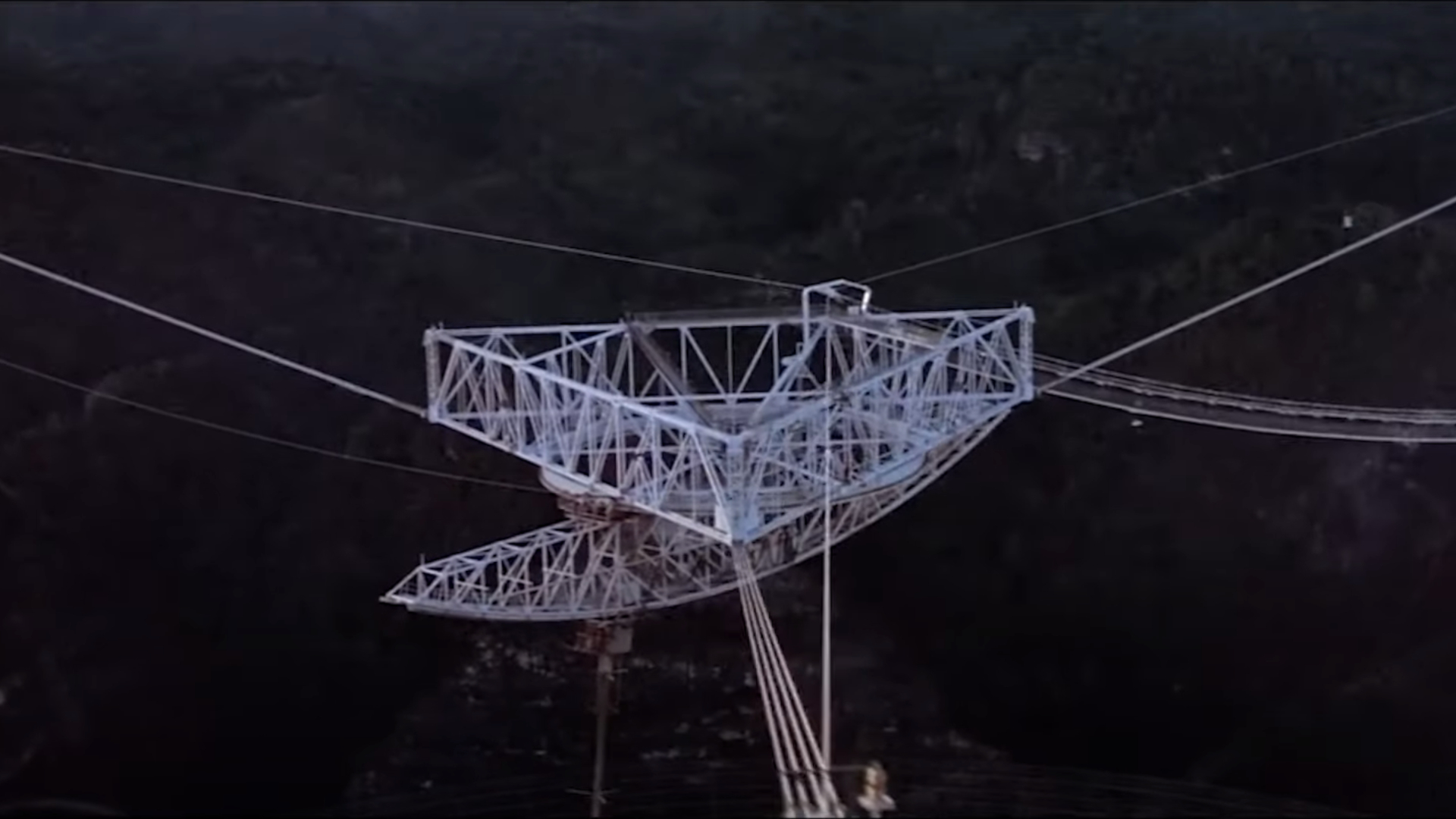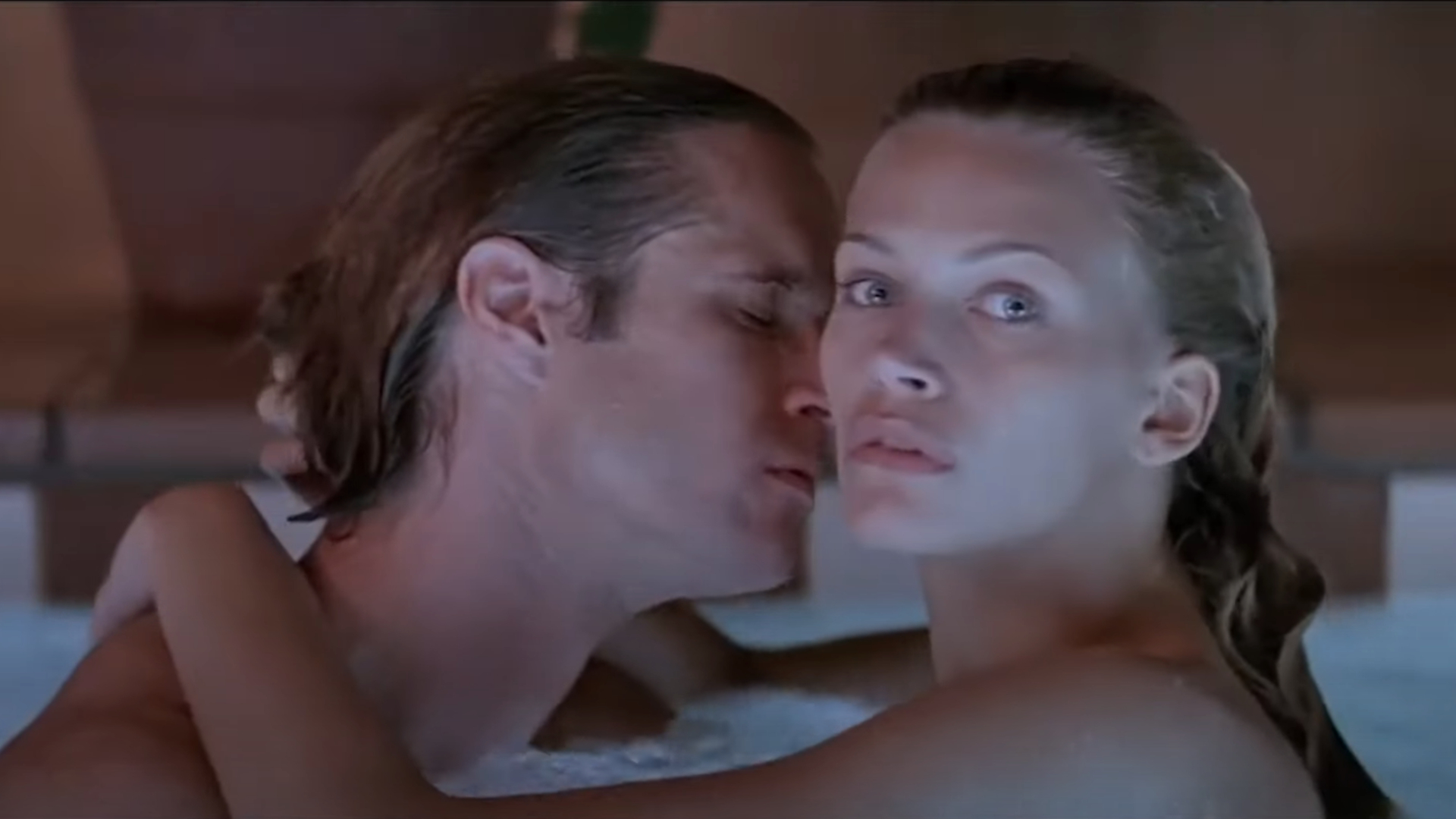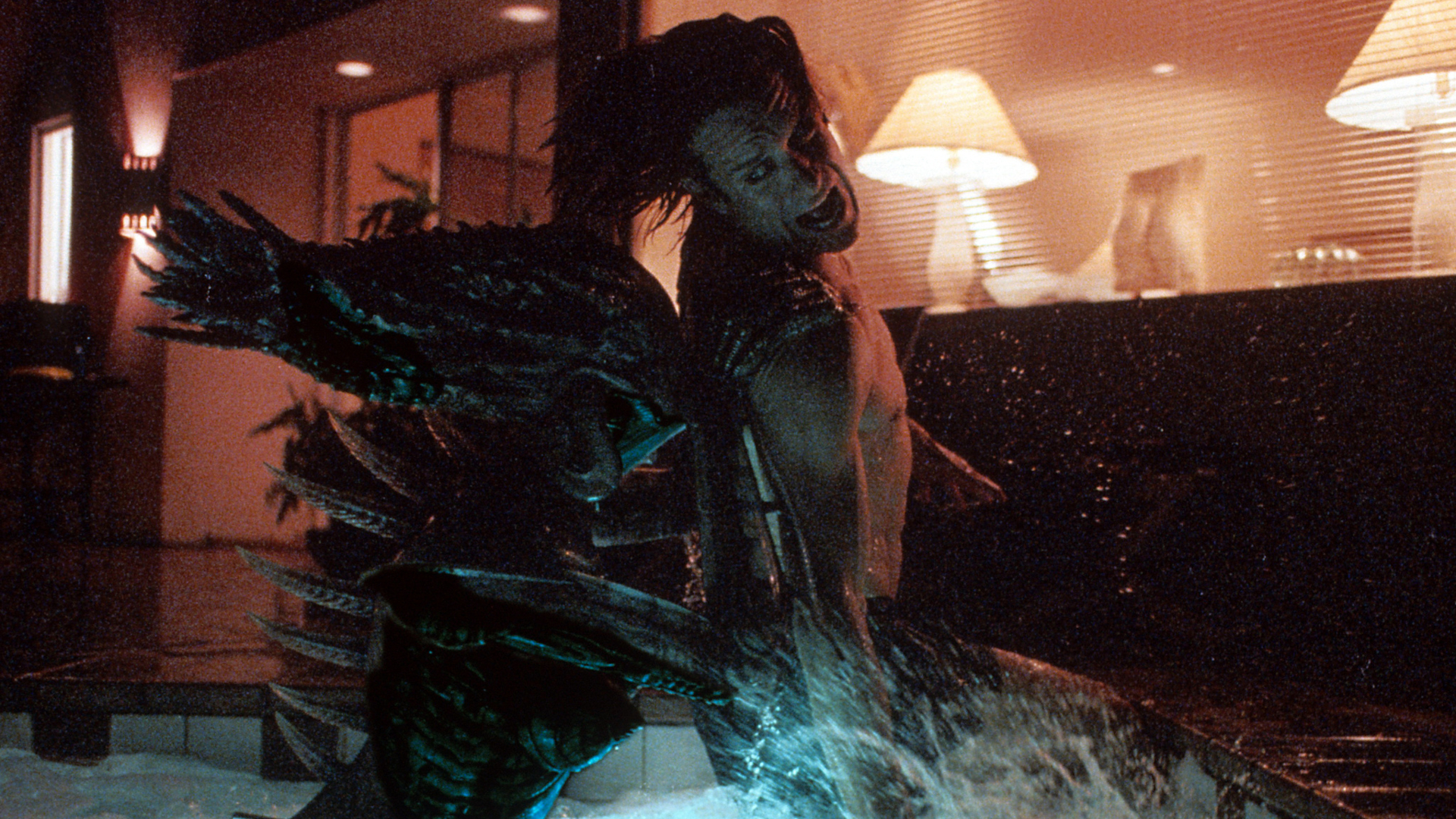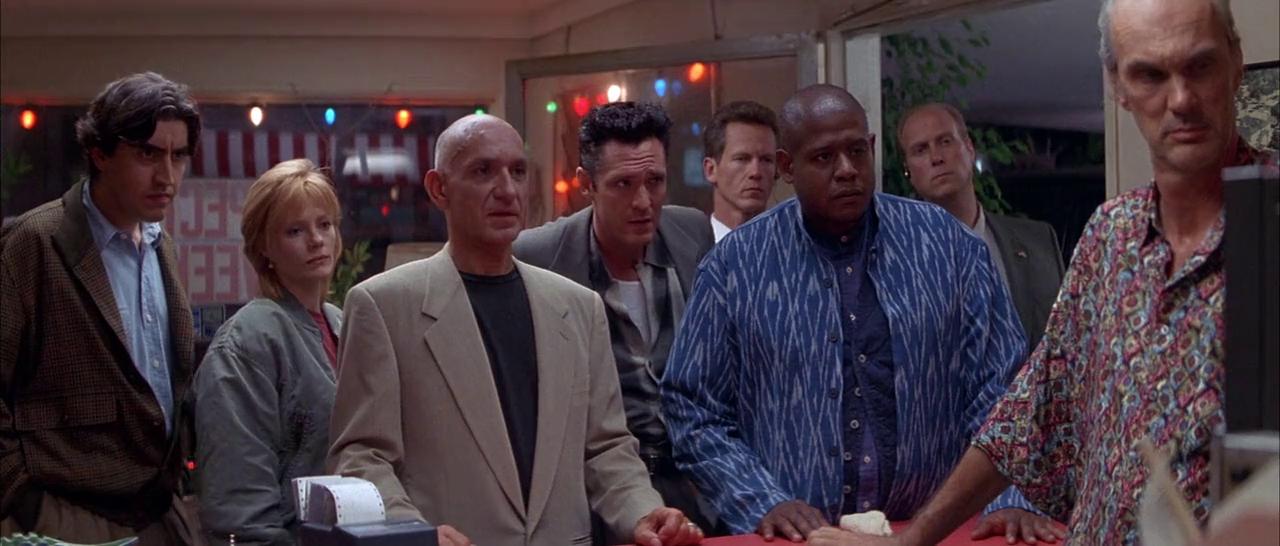Given its subject matter, it’s appropriate that “Species” turns out to be such a jarring hybrid of ideas and tones. Thirty years after it originally mutated into multiplexes, this high-concept tale of an alien woman created from human DNA fused with genetic code from the stars remains an implausible collection of contradictions.
Is it a glossy sci-fi actioner or the result of a major studio spending big money on an exploitation movie? Are the “Contact”-esque themes at “Species”‘ heart genuinely sophisticated, or just a gratuitous excuse for its central character to take her clothes off (repeatedly) in her murderous quest to — in the film’s words, not ours — “mate”?
Remarkably, all of these things are true, yet somehow don’t come close to doing “Species”‘ unique combination of schlock, gore, and hard sci-fi justice. In fact, the best way to think of it is as a thought experiment, pondering what might happen if “Contact” author Carl Sagan teamed up with “Basic Instinct” scripter Joe Eszterhas to write a screenplay, and a Hollywood studio stumped up the cash to see if they were correct.
Watch On
This being the Hollywood of the mid-’90s, the Eszterhas half of the equation won out. Even so, “Species” began with lofty sci-fi aspirations, with writer Dennis Feldman (who originated the screenplay that eventually became Eddie Murphy’s “The Golden Child”) inspired by the creator of “2001: A Space Odyssey”. Arthur C Clarke had suggested that — due to the vast distances involved — aliens were much more likely to send us a message than go to the trouble of making contact via the popular medium of flying saucer. The theory struck a chord with Feldman.
“I decided it was very unsophisticated for any alien culture to come here in what I would describe as a big tin can,” he said in a 2004 documentary about the making of “Species”. “I realized that they would send a message, and then I decided that it would be exciting if the message would be instructions to make something that could speak to you. And as I wasn’t very fond of machines at that time I wanted it to be something biological. [It became] instructions to make a creature that would survive in your environment.”
Titled “The Message”, Feldman’s original spec script focussed on a biologist at a government facility trying to decipher the instruction manual from the cosmos. (Feldman actually spoke to scientists at UCLA, SETI (the Search for Extra-terrestrial Intelligence) and the Human Genome Project to beef up the science in his script, though later admitted, “I think the final result of the movie in some ways disappointed them.”)

When the scientist’s bosses pulled the plug, he continued his experiments on the human/alien chimera at home, with predictably disastrous results. He then teamed up with a detective to track down the troublesome ET, in a story that would have played out as a relatively small-scale police-type procedural.
When “Species” ended up at MGM, however, director Roger Donaldson (“Cocktail”, “No Way Out”) and producer Frank Mancuso Jr (the “Friday the 13th” franchise) wanted to zero in on the thriller/monster movie potential wrapped up in the story’s DNA.
That sci-fi origin story would be pared back to a title card about SETI, and some stock photography of the Arecibo radio observatory in Puerto Rico — which, coincidentally, had a major role in James Bond adventure “GoldenEye” the same year. The buddy-cop angle was excised in favor of a quintet of experts bringing their own unique set of skills to the alien-hunt, and the monster…? Let’s just say she may be the only example of an antagonist existing at the point where “Barbarella” and “Alien” intersect on a Venn diagram.

To be fair, “Species” never tries to hide the fact it’s a teenage boy’s dream in Hollywood blockbuster form, unashamedly ticking the necessary boxes for action, violence, sex, and nudity. The cruel irony, of course, was that — most notably in the UK, where the film was slapped with an 18 certificate — they wouldn’t be able to see the film at the cinema. (Luckily, there’d only be a few short months before they could ask their parents to rent it for them on VHS.)
Making her big-screen debut, 20-year-old model-turned-actor Natasha Henstridge was chosen to play alien Sil’s human side. Her efficient, dialogue-lite performance has echoes of Arnold Schwarzenegger in “The Terminator”, though nowhere near as quotable, and with rather more gratuitous nudity.
Her extra-terrestrial side, meanwhile, was the work of HR Giger, the Swiss artist who’d left a lasting impression on pop culture with his creature designs for “Alien”. Giger’s famous fascinations with biomechanical forms and sexual imagery are obvious every time Sil morphs into her alien form, and — at times — off-puttingly reminiscent of his work on Ridley Scott’s classic.
Steve Johnson, responsible for “Species”‘ practical monster effects, says he followed a guiding principle of “doing whatever it takes to make HR Giger happy”, though not everyone on the production gave the artist quite so much creative control. Indeed, when the powers-that-be didn’t fully indulge Giger’s vision for a spooky ghost train, the artist stumped up $100,000 of his own cash to build the model himself. It ultimately appears on screen for barely 10 seconds, a procession of chomping Xenomorph heads chasing the young Sil (played by future Oscar nominee Michelle Williams) in a bizarre, incongruous nightmare.

Time has been particularly unkind to “Species”‘ early experiments with computer effects. Only two years had passed since “Jurassic Park” opened Pandora’s CG toybox, and filmmakers were still getting a feel for the potential (and limitations) of the new technology. As a result, Sil has an unnervingly artificial quality every time she’s realized in pixels.
A much bigger crime, however, is a shooting script that hangs an impressive cast — including Sir Ben Kingsley, Forest Whitaker, Alfred Molina, and the late Michael Madsen — out to dry.
Although the months-old Sil has a prodigious learning curve, she shouldn’t be able to outwit Molina’s professor of anthropology by turning up in his hotel room uninvited, and offering him a night of passion that will both fulfill her urge to conceive, and prove fatal for naïve (okay, stupid) scientists.

Whitaker, meanwhile, has a thankless role as an empath whose narrative function flips between making improbable, almost psychic pronouncements, and stating the painfully obvious. “Something bad happened here,” he says — with an entirely straight face — when the team discovers a corpse next to Sil’s discarded cocoon on a train.
If all of the above was supposed to be a joke, MGM certainly had the last laugh. A film that picked up predominantly mediocre reviews (it’s currently rated 42% rotten on Rotten Tomatoes) did strong enough box office to outperform bona fide classics like “Clueless” and “Pulp Fiction”, and spawned three sequels (two of which featured Henstridge).
Its influence can be seen in the superior likes of “Splice”, “Life” and — most obviously — “Under the Skin”, though few mainstream movies have come close to matching “Species”‘ unusual sex ‘n’ sci-fi combo. Evolutionary history is packed with unlikely solutions for survival, but life has rarely found a way quite as it does in “Species”.
‘Species’ is available to stream on MGM+ (via Amazon Prime Video) in the US and the UK, and on Fubo TV in the US.


